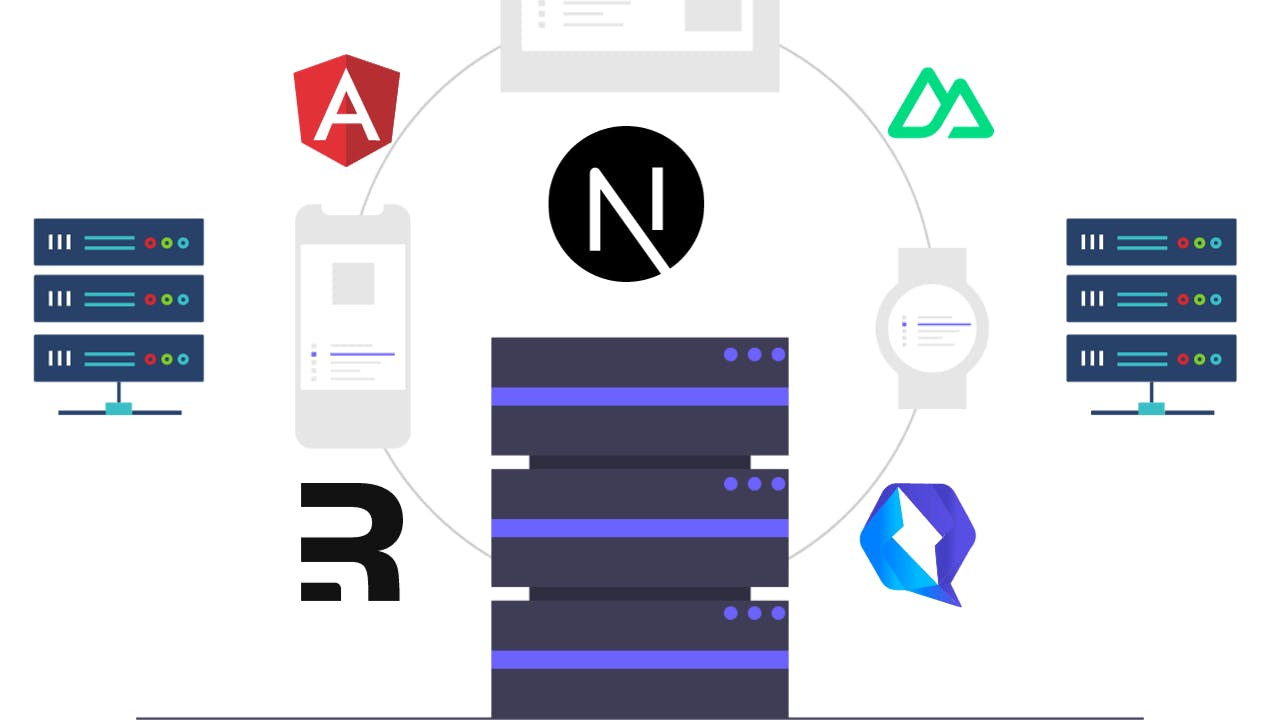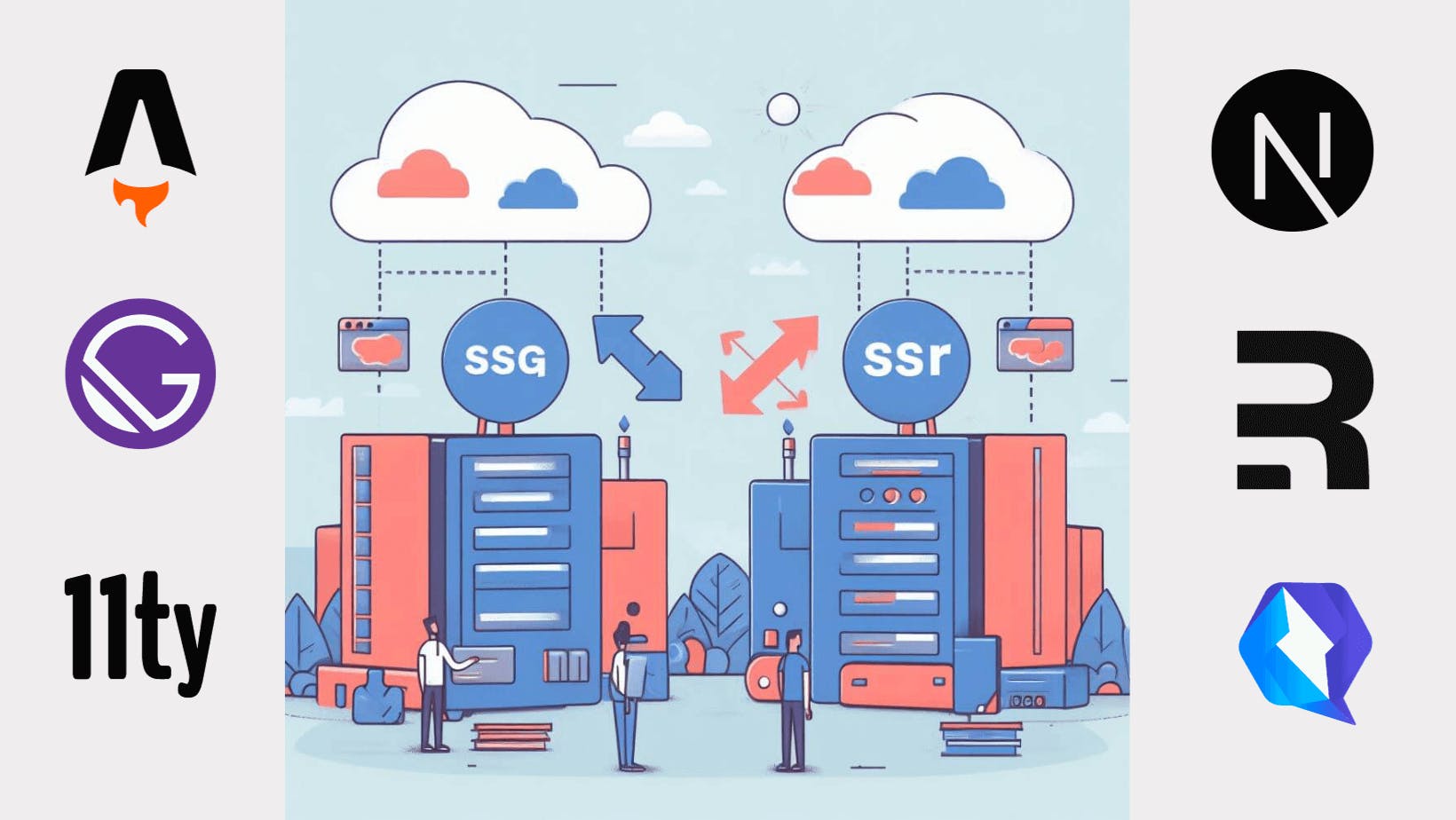SSR Frameworks: What are they and how to choose the best one for your project?
Would you like to create fast, dynamic, and SEO-optimized web applications? Then, you might be interested in getting to know SSR frameworks, one of the most significant trends in current web development.
In this article, you will learn what SSR is, what its advantages and challenges are, and we will introduce you to the best JavaScript frameworks for building server-side web applications.

Fundamentals of Server-Side Rendering (SSR)
SSR stands for Server-Side Rendering, or rendering on the server side. This means that the content of a web page is generated on the server before being sent to the user's browser.
This way, the browser receives a complete HTML page ready to be displayed, without having to wait for the client-side JavaScript code to execute.
The purpose of SSR is to enhance the user experience and search engine positioning. By rendering content on the server, the page loading time is reduced, improving speed and usability.
Moreover, by sending a complete HTML page, indexing and crawling by search engine bots are facilitated, enhancing SEO.
SSR is especially useful for creating dynamic web applications, i.e., those that display personalized and updated content based on user data or external sources.
With SSR, this content can be generated on the server, eliminating the need for AJAX calls or client-side JavaScript frameworks.
Advantages of Server-Side Rendering over other approaches
Server-Side Rendering offers several advantages over other methods of creating web pages, such as client-side rendering or static site generation.
SSR vs Client-Side Rendering
Client-side rendering involves sending an empty HTML page to the browser, with a JavaScript file responsible for dynamically generating the content.
This approach to creating web pages has the advantage of enabling greater interactivity and reactivity, but it also has some drawbacks:
- On the one hand, the initial loading time is longer since the browser has to wait for the JavaScript code to download and execute.
- On the other hand, SEO is affected because search engine bots cannot interpret content generated by JavaScript.
Server-Side Rendering vs Static Generation

Static Generation involves creating HTML pages in advance, with the content already defined. This method of creating web pages has the advantage of offering high loading speed and good SEO, as a complete and optimized HTML page is sent to the browser.
However, static generation has the drawback of not allowing dynamic content creation, as the content is defined at the compilation moment and cannot be modified later.
Server-Side Rendering combines the best of both worlds, allowing dynamic content creation on the server and sending a complete, optimized HTML page to the browser. This achieves faster loading speed, improved SEO indexing, and greater content customization.
Challenges and Considerations in SSR
Server-Side Rendering has many advantages, but there are also challenges and considerations to keep in mind when developing SSR web applications. Some of these challenges and considerations include:
- Implementation Complexity: Transitioning to SSR often introduces an additional layer of complexity in web application development. Effectively integrating SSR may require significant adjustments to existing architecture, potentially complicating code comprehension and maintenance.
- Server-Side State Management: Properly handling states on the server can be challenging. Ensuring that application states are handled correctly on both the server and client for consistency may require advanced strategies such as state serialization and deserialization.
- Server Performance and Costs: SSR shifts some processing to the server, potentially increasing the workload, especially in large-scale applications, which could significantly impact your hosting provider bill. Optimizing server performance to handle rendering requests can be essential for ensuring a smooth user experience.
- Caching and Scalability: Implementing effective caching strategies is crucial for improving SSR scalability and efficiency. Proper cache management can significantly influence overall application performance, especially in high-concurrency environments.
- Compatibility with Frontend Libraries and Frameworks: The choice of frontend libraries and frameworks can affect SSR compatibility. Some libraries may not be fully compatible, requiring adjustments or the search for alternatives that seamlessly integrate with server-side rendering.
Most Used Server-Side Rendering Frameworks Today
There are several frameworks and tools that facilitate the development of SSR web applications, among which the following stand out:
- Next.js: It is a React-based framework that allows creating server-side-rendered web applications. Next.js offers advantages such as file-system-based routing, static page generation, TypeScript support, and data handling with server actions and API functions.
- Remix: It is a full-stack framework based on React that allows creating both the frontend and backend of an application. Some features of Remix include base support for TypeScript, easy data loading management, and an intuitive routing system, among others.
- Nuxt: It is a Vue-based framework that enables creating universal web applications that can be rendered on both the server and the client. Nuxt offers a predefined folder structure, a module system, automatic routing, a plugin system, and integration with Vuex for state management.
- Angular Universal: It is a tool that enables using the Angular framework for SSR. Angular Universal helps improve the initial loading time, SEO, and accessibility of web applications created with Angular.
- SvelteKit: It is a framework based on Svelte that allows creating web applications with SSR, CSR, or static page generation. SvelteKit uses an adapter system that enables deploying applications on various platforms, such as Node.js, Vercel, Netlify, or Cloudflare Workers.
- Qwik: It is a framework with a syntax similar to React that enables creating high-performance SSR web applications. Qwik utilizes a concept called "resumability," sending only the HTML needed for the user interface and later loading necessary JavaScript for specific components. Qwik also offers an event system, state management, and integration with development tools.
- Deno Fresh: It is a Deno-based framework that allows creating web applications with SSR and CSR. Deno Fresh uses the ESM format, enabling dynamic module imports from any source. Deno Fresh also provides file-based routing, TypeScript support, and data handling with API functions.
Final Considerations and Recommendations for Choosing the Right Framework Based on Project Requirements
When choosing the right framework for creating an SSR web application, several factors should be considered, such as:
- Type of Content: Depending on whether the content is static or dynamic, a framework offering a more convenient way of pre-rendering, such as SSR, SSG, or CSR, or intelligently combining them, can be chosen.
- Type of Project: Depending on whether the project is simple or complex, a framework offering a simpler or more advanced development experience, with more or fewer features and functionalities, can be chosen.
- Type of User: Depending on whether the user is passive or active, a framework offering a faster or richer user experience, with more or less interactivity and reactivity, can be chosen.
- Type of Library: Depending on whether React, Vue, Angular, or none is preferred, a framework based on one of these libraries or independent of them can be chosen.
SSR frameworks are a highly interesting and powerful option for creating quality web applications that meet the needs and expectations of users and search engines.
However, there is no one-size-fits-all framework; it depends on the requirements and preferences of each project. Therefore, it is essential to understand the features, strengths, and weaknesses of each framework and choose the one that best fits the goals and context of the application.